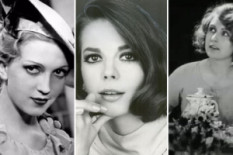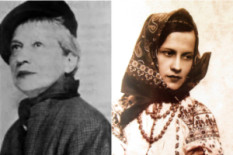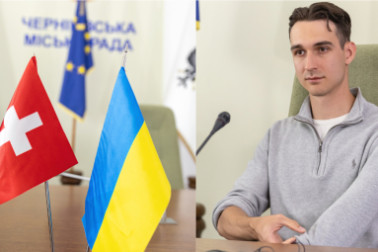She was born in Galicia in 1907 to a priest. At the age of 20, Sofia moved to Paris. Before that, this girl of progressive views and extraordinary talents organized and managed two cinemas in Ternopil. Thanks to the money she earned, she was able to go to France. This restless young woman dreamed of an acting career.
 Source: Ukrainian people
Source: Ukrainian people
She quickly managed to get a small role in one of the Pathé-Natan films, but it was not enough, so the young beauty got a job as a fashion model.
France gave Sofia acquaintances with famous Ukrainians, including the writer and traveler Stepan Levynskyi, with whom she was friends until his death, and the writer and public figure Volodymyr Vynnychenko.
But it was love that brought her together with the French artist Christian Caillard. However, the couple did not marry — Sophia was not ashamed to live with her lover in a civil marriage, which was a common occurrence at the time.
It was Christian's stories about Africa that inspired the future "travel blogger" to take her first trip. Then she went to Morocco.
Travels of a traveler
Sofia documented her first trip in her novel The Magic of Morocco. It was published in Lviv in 1932. Both critics and readers liked the book. Galicians looked with admiration at the distant unknown land through the eyes of their countrywoman, and reviewers noted the author's colorful style, cheerful tone, and talent.
 Source: Photos of old Lviv
Source: Photos of old LvivHer first trip inspired Sofia to travel further, and she went around the world — she visited Egypt, China, Ceylon, Laos, Cambodia, Vietnam, the Malay Islands, Java, Bali, Tahiti, Australia, New Zealand, Canada, and the United States. The emancipated Ukrainian woman financed her trips on her own, receiving money for making documentaries for the Filmtak and Indochina film societies.
If we recall the times when Sofia worked and traveled, we can imagine how revolutionary and progressive that girl was.
Sofia once mentioned that none of the filmmakers believed that a woman could make anything worthy of attention.
The filming was indeed quite difficult: people refused to be filmed because they feared that the camera might take away part of their souls, and in China she was even stoned several times. White people were treated with distrust. However, Sofia did not give up and invented various ways to film the material.
 Source: Local history
Source: Local history
For example, she once rented a room with windows on a busy road and opened a shop called "Cars and Airplanes" there. This helped her to secretly film the Chinese.
"In the end, I managed to film not only the daily movement of caravans, porters, carters, the march of convicts, but even the wedding procession and the ceremonial funeral of a Chinese rich man," Yablonska wrote in her article "Chinese Films" in 1934.
In China, she married a Frenchman, Jean Oudin, who later became the French ambassador. The family lived in Asia for 15 years and raised three sons — Alan, Dank-Michel, and Jacques Oudin, who later became a French senator.
Relationship with Ukraine
Galicians, who were inspired by Yablonska's book, were well received by her subsequent books. In 1936, she published “From the Land of Ginger and Opium”, where she described China, and in 1939, “Far Horizons”, in which she described her amazing adventures.
She illustrated the books with her own photographs, full of exoticism and wonders.
The last time the talented Galician woman visited her native land, she had many meetings with fans of her work and warm literary evenings.
But Sofia also kept in touch with Ukraine from a distance, asking to send her recordings of folk songs and music, embroidered clothes, and patterns of various Ukrainian embroideries.
Wherever she went, wherever she lived, she always had Shevchenko's Kobzar, a Hutsul doll, and a carved wooden bowl with her.
In 1946, the family returned to Paris. After that, almost immediately, a period of losses began. First, her old friend Stepan Levynskyi passed away, then Olha's sister and mother, and in 1955 her husband.
Left alone, the woman moved to the island of Noirmoutier in France, built a villa there according to her own design, then furnished and decorated it herself.
 Source: Photos of old Lviv
Source: Photos of old Lviv
Sofia Yablonska died in a car accident on February 4, 1971, when she was transporting a new collection of short stories and essays "Two Measures — Two Weights" to the publishing house. She died the same way she lived - in movement and creativity.
In Ukraine, people began to actively remember her in the 2000s.







